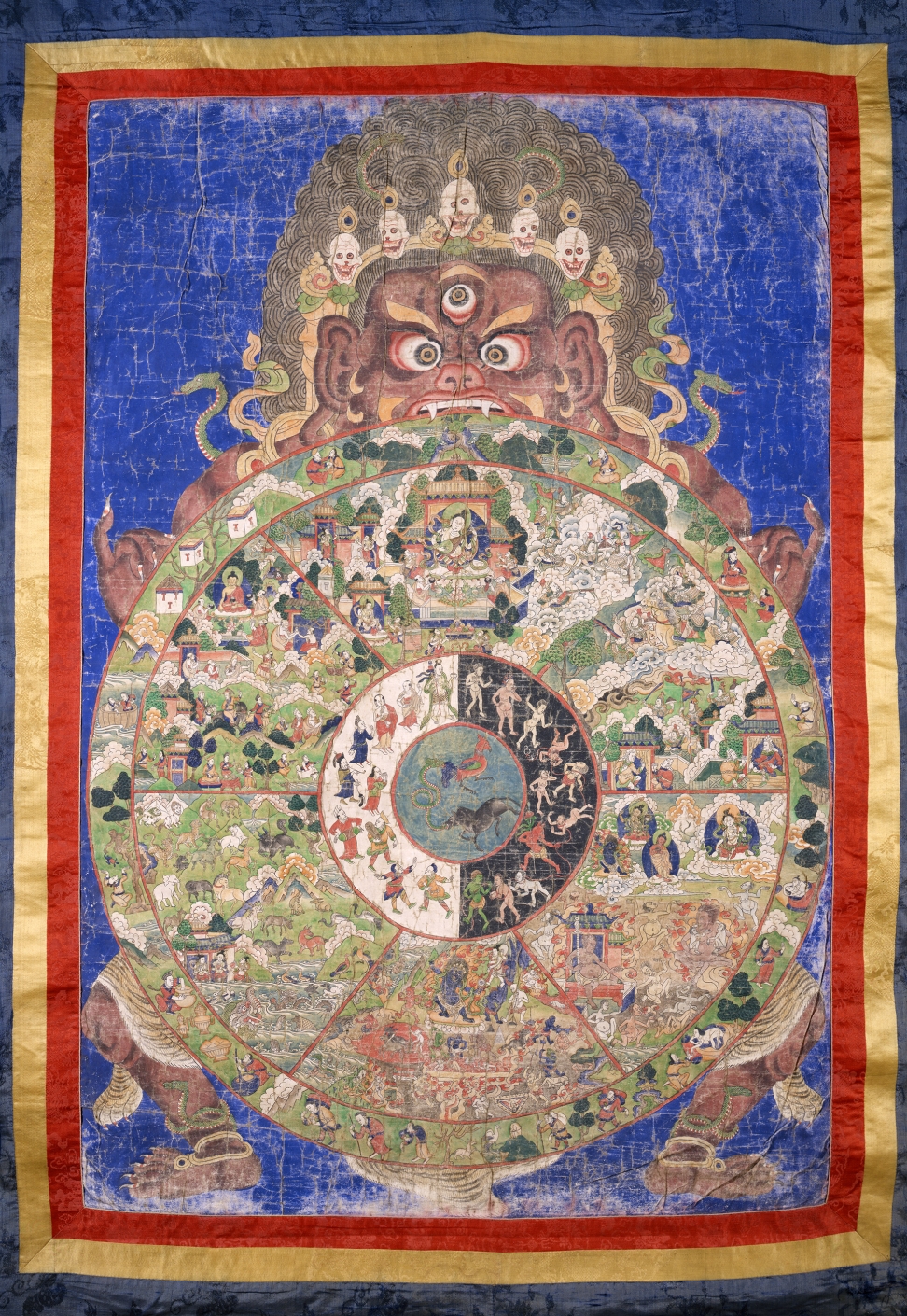
The Wheel of Life is a Tibetan Buddhist visualization of the human condition within the endless cycle of birth, death, and rebirth—samsara and a vivid reminder of the law of karma. Painted on a striking lapis background, the red, wrathful figure of Yama, the Lord of Death, or possibly Yami, female demon of death, holds the circle of samsara containing all six realms of existence, and is about to swallow it – reflecting the precarious impermanence of all that exists in these realms.
The center of the wheel portrays the three mental poisons, or kleshas, that keep beings trapped in samsara: attachment (a rooster), hatred (a green snake), and ignorance (a black pig). The next circle, with white and black halves, reminds us how these qualities, and their opposites, rule our future. The black half shows that negative actions, powered by the three poisons, lead us downward into the lower births. The white half shows that if we practice right motivation and right action, we can move upward through the Wheel of Life and ultimately liberate ourselves. The widest circle depicts the six realms of possible rebirths within samsara: hell beings (at the bottom), hungry ghosts, animals, human beings, demigods, and gods (at the top).
Along the outer edge, the twelve links of dependent origination symbolize how consciousness becomes trapped in samsara under the power of ignorance, which leads to actions with karmic repercussions, the sensual desires of the body and mind, mental grasping at pleasures and existence, and ultimately birth, old age, and death.
H 45 1/2 x W 30 5/8 in.
Gift of Shelley and Donald Rubin
C2006.66.131, HAR78
- https://dev.rubinmuseum.org/images/content/2815/sfw_c2006.66.131har78-800res__zoom.jpg
- https://dev.rubinmuseum.org/images/content/2815/sfw_c2006.66.131har78-800res__zoom.jpg

